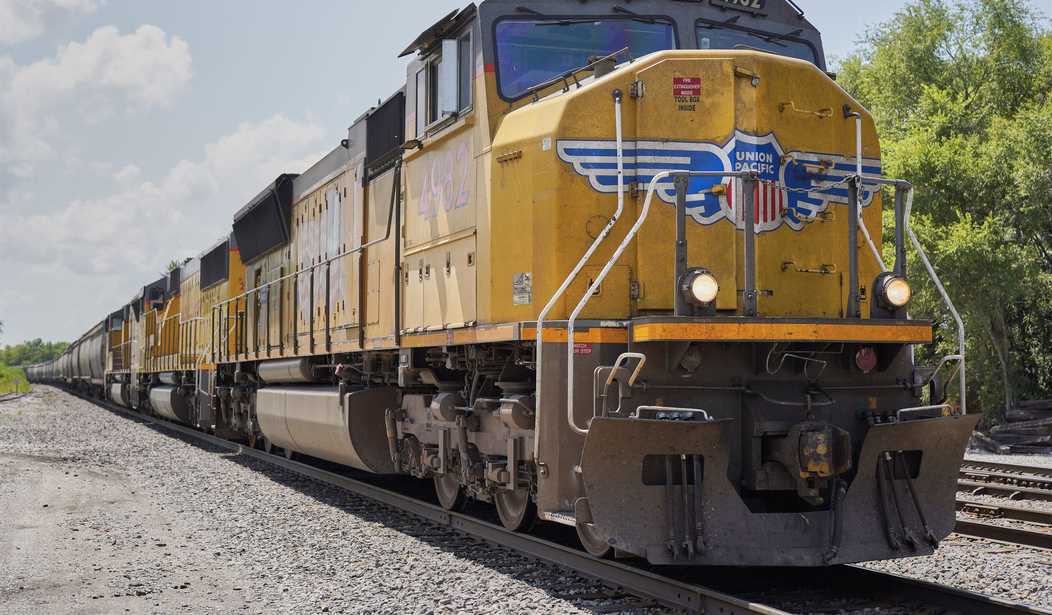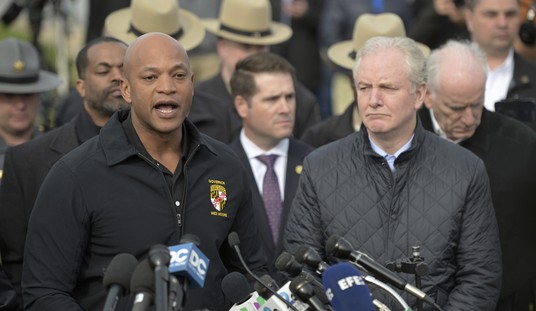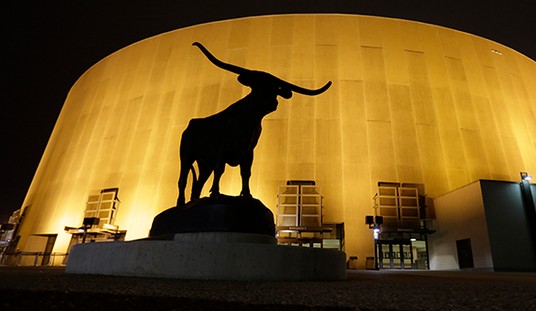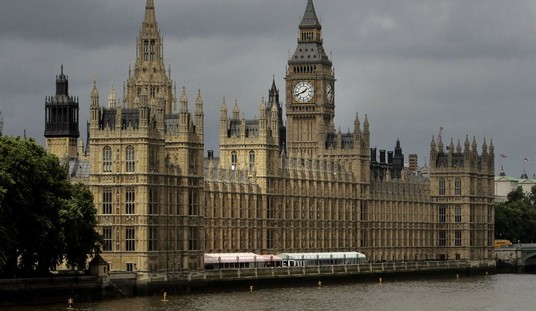The country is facing what could potentially be a catastrophic railway strike, when the cool-down period on labor negotiations expires on September 16th. Initial estimates are that it would cost an already struggling economy $2B a day, and the movement of both freight and commuters would grind to a virtual halt.
On the heels of the latest round of labor negotiations between the National Mediation Board, unions, and freight railroads, the Association of American Railroads has released a report projecting that the economic impact of a nationwide railroad strike could be more than $2 billion a day.
So far, five of the 12 unions, representing 21,000 employees, have reached voluntary agreements with the railroads. The expiration of the 30-day cooling-off period when unions can walk off the job is midnight on September 16. There are just under 115,000 Class I railroad employees in the U.S., according to August data.
If a strike happens, the report from the AAR’s policy and economics team — which uses historical data from the Federal Railroad Administration — states that the 140,000-mile network of rails across 49 states and 7,000 Class I trains would be idled, and the impact would cripple both the movement of trade and commuters.
There are not enough trucks or truck drivers to move the rail bound containers, according to the report, with an additional 467,000 long-haul trucks per day needed to handle the freight.
A dear friend has been in the coffee import business for decades and has been dealing with surging and maddening increases in shipping costs, delays, routing issues, and all the other effects that Covid and the stimulus checks have had on the global supply chain and ports here in the US. As trade lanes dried up and ships were quarantined the usual flow of full containers and returning of the empties fell apart, and when consumers did start spending again the demand for empties (and ships to carry them) in the Far East sucked such a disproportionate share of them to be filled with consumer goods that the north/south flow for agricultural goods out of South and Central America was severely affected, to the point where space on ships northbound became scarce, and if you could book space you often missed the vessel anyway because the steamship company didn’t have any empty containers for you to use. As a result, naturally, freight rates spiked when the new contracts were issued for this year, and for a container that you could ship previously for under $2000 you now had to pay upwards of $8,000-12,000 in many cases, and sometimes more. These inflationary increases are still mostly in the pipeline and have not hit the prices on the shelf yet because coffee, like many commodities, is traded 1 to 2 years into the future basis the cost structure when the business is negotiated, as the freight component has traditionally not varied more than a few hundred dollars. Now it has by many thousands of dollars, which is far in excess of whatever profit one had expected to make on the business, and to try and take that risk off the table for the next year’s business the new contracts were and are being negotiated now based on either the highest freight rates or with the freight left out entirely, meaning the buyer, be it any coffee company you’d care to name, paid whatever the freight rate was on that shipment. Could be $6,000, or it could be $12,000. And with the consolidation of the worldwide shipping industry into basically 3 conglomerates, the options have narrowed considerably as their power to raise the rates has increased.
Fast forward to the big ports really stacking containers up, with trucking companies not having the trucks nor drivers to move them out fast enough. I’ll let him tell you in his own words.
The West Coast ports were all jonesed, so what carriers did was ship everything to Savannah and Norfolk, and then rail the stuff out to California.
So now the number of ships off the West Coast ports has dropped way down, Savannah and Norfolk are clogged, and the rail system is even worse.
What I’ll tell you now is, I hope, an outlier, but indicative of the chaos in the supply chain. I have a container of coffee that was shipped…to Norfolk and then sent by rail to California because no vessels could get to California directly. Again, I pray this is an extreme example, but it finally arrived [in CA] on September 5th. It left Norfolk VA on June 15th.
As he told me, coffee beans aren’t “perishable” in the regular sense, but sitting in a railway car God-knows-where in the dead of summer for 3 months does nothing for quality control. This is a 3-month delay with the railways moving freight.
What happens to commerce/perishable/all those business riders, if they shut down?
As of this week, several rail lines and the Port of Virginia put forth a plan to try to mitigate some of the congestion that is stalling containers all over the country. What they are proposing seems so obvious, but apparently, it’s rare – that a truck driver dropping off a container at its delivery point…pick one up at the same time to take it back with him. I can only assume they don’t because of how they’re paid, or manifests – I’m sure it’s all hugely complicated, but at least they’re trying.
Ongoing rail congestion at West Coast ports has created an opportunity for East Coast ports, container shipping companies and rail operators to enter into new trade relationships.
In January, ocean carrier Hapag Lloyd, Norfolk Southern, the Port of Virginia, and Union Pacific, collaborated in creating a triangle of trade where West Coast bound freight would be brought into the Port of Virginia and loaded onto Norfolk Southern rail cars. The containers would then be loaded onto a UP railcar in Chicago bound for the West Coast.
“At the end of the first quarter, we began to see the service develop,” said D’Andrae Larry, group vice president of international intermodal at Norfolk Southern. “Since then we’ve seen that service continually grow. So the first and foremost thing was this service was accepted by the marketplace.”..
…This service also moves containers West to East, enabling Union Pacific to move out its own containers. Pacific Northwest shippers say they have been using this new trade service because they can get their containers out of the Port of Virginia. They are also redirecting containers down to the Gulf ports.
Another innovation Norfolk Southern is using to drive more balance between imports and exports is its Dual Mission rewards program, which incentivizes truckers to drop off and pick up containers in one trip. Truckers are paid a $200 incentive each time they complete a dual mission.
They’ve thrown a little sweetener in for the drivers, too.
But all for naught if the workers walk off Friday. Many are inclined to do just that. Only 5 of the 13 unions representing them have agreed to tentative deals, and the rest are shaping up to be hardliners. Even The Hill is phrasing a strike as “kneecapping the economy.”
Five of the 13 unions representing rail workers have reached tentative agreements with railroads to enact the Presidential Emergency Board (PEB) recommendations, which call for 24 percent pay raises, back pay and cash bonuses.
But the bulk of railroad workers belong to unions that haven’t yet agreed to a deal. It’s also unclear whether workers would vote to ratify PEB recommendations that don’t address their concerns about punishing hours and rigid schedules that make it difficult to take time off for any reason.
“I would suspect that most railroad workers would love to strike, would love to get back at their employers after years of abuse while they watched the industry make record profits,” said Ron Kaminkow, an organizer at Railroad Workers United, which represents rank-and-file railroaders.
More than 9 in 10 railroad workers would vote to reject the PEB recommendations and go on strike, according to a recent survey from the organization…
…Experts say that an extended walkout would devastate industries that rely on freight to transport grain, coal, diesel, steel and motor vehicle parts. Shipping containers would pile up at ports, severely congesting supply chains and sending prices soaring ahead of the holidays.
“The railroads are actually very critical to the nation’s economy, and also to security. There’s a lot of hazardous stuff that simply can’t go by road,” said Nicholas Little, director of railway education at Michigan State University’s Center for Railway Research and Education.
Congress has the power to block a strike (the last time they did so was 30-odd years ago), order them back to work, and accept the White House’s mediation board’s recommendations should they vote to walk out. Agricultural organizations, among others, are pushing hard for them to act.
In a letter to the top lawmakers on transportation committees, agricultural groups warned that farmers rely on freight rail to transport their goods and that any kind of stoppage would likely lead to the loss of food supplies, driving up prices and exacerbating the risk of famine around the globe.
“A complete stoppage of the rail system would lead to shutdowns or slowdowns of rail-dependent facilities resulting in devastating consequences to our national and global food security,” the groups, including the American Farm Bureau Federation and National Grain and Feed Association, told lawmakers.
“A freight rail stoppage would drastically make inflation worse, especially for those who can least afford it,” they added.
It remains to be seen if they’ll do so.
I tried to find a recent Pete Buttigieg quote. I’ll keep looking. This one was dire enough.
Labor expert and National Right to Work Foundation president Mark Mix told FOX Business that he suspects a last-minute agreement will ultimately be reached to avoid a strike, given the catastrophic ripple effects a rail shutdown would have on the entire economy.
“If they really do stop all the trains… boy, can the economy sustain another hit like this?” Mix said. “We’ve got food shortages, we’ve got droughts and water problems on the West Coast, and now if we overlay all of that — this power that unions have gotten over very essential elements of our economy — they can hold the entire country hostage.”








Join the conversation as a VIP Member